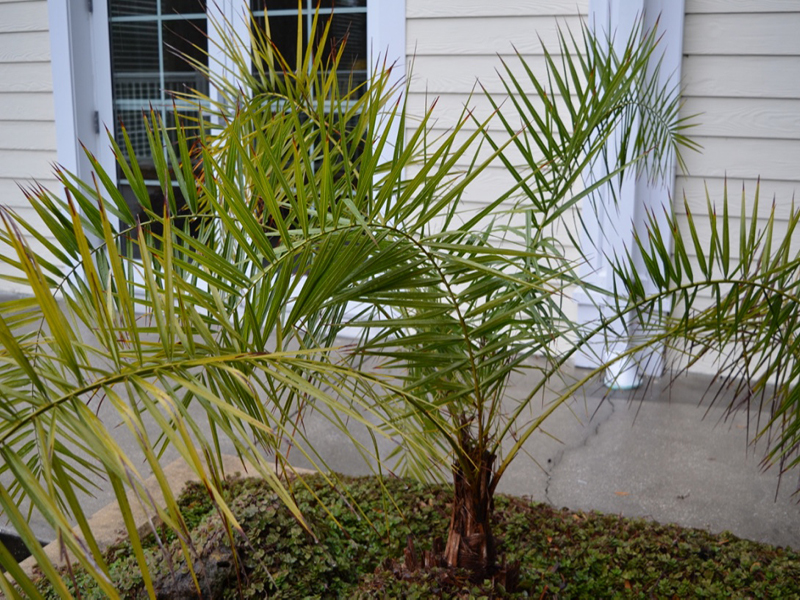
Tropicals, Woody > Phoenix > Phoenix loureiroi > Phoenix loureiroi var. pedunculata
Phoenix loureiroi
var. pedunculata
Mountain Date Palm, Blue Mountain Date Palm
Origin: Native to southern Asia.
| Family |
| Arecaceae |
| Genus |
| Phoenix |
| Species |
| loureiroi |
| Category |
| Tropicals, Woody |
| Type |
| Tree (evergreen) |
| Variety |
| pedunculata |
| Synonyms |
| Phoenix humilis var. pedunculata, Phoenix humilis var. robusta, Phoenix humilis var. typica, Phoenix loureiroi var. humilis, Phoenix ouseleyana, Phoenix pedunculata, Phoenix robusta |
| USDA Hardiness Zone |
| 9a - 11 |
| Canadian Hardiness Zone |
| Requires cold season protection under glass. |
| RHS Hardiness Zone |
| H3 - H1c |
| Temperature (°C) |
| (-6.6) to above 4.5 |
| Temperature (°F) |
| 20 - 40 |
| Height |
| 6 m |
| Spread |
| 4 m |
Photographs
Description and Growing Information
Flowering Period
| Cultivation |
| Plant in extremely well-draining loamy to sandy soil that is neutral to slightly alkaline. |
| Shape |
| Upright erect. |
| Growth |
| Slow |
| Habitat |
| Grows in deciduous and evergreen forests and in clear terrain from sea level to an altitude of 1,500 m. |
| Bark/Stem Description |
| Solitary and clustering plants with trunks from 1–6 m high and 25 cm in width, usually covered in old leaf bases. |
| Leaf Description |
| The leaves reach 2 m in length with leaflets wide at the base and sharply pointed apices. The leaflets emerge from the rachis at varying angles creating a stiff, plumose leaf. |
| Flower Description |
| Erect, yellow inflorescences, usually hidden within the leaf crown. |
| Fruit Description |
| A single-seeded drupe, bluish-black when ripe. |
| Colour Description |
| Texture Description |
| Coarse and woody bark. |
| Notable Specimens |
| Harry P. Leu Gardens, Orlando, Florida, United States of America. |
| Ethnobotanical Uses (Disclaimer) |
| The fruit is highly valued in many regions of the world where it is a staple of peoples diet. The fronds are used for thatch and screening while in India the tree is tapped for date wine. The seeds, which remain viable for some time, can also be ground into a meal for animal feed. The trunk, although not structurally strong, can be used in construction. The fronds can also be further worked into baskets, mats, fishing traps, etc. |
